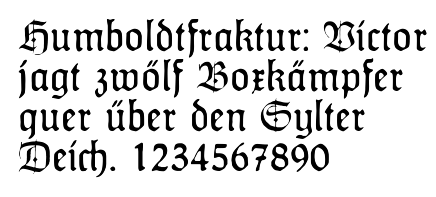
German Fonts: A Journey Through Typography and Culture
September 12, 2023Typography is a visual language that transcends borders and cultures. Each region has its unique typographic identity, and Germany is no exception. In this exploration of German fonts, we will embark on a journey through the rich history, distinctive characteristics, and cultural significance of fonts in Germany.
The Historical Roots of German Typography
The history of German typography is deeply intertwined with the invention of the printing press by Johannes Gutenberg in the 15th century. Gutenberg’s Bible, printed in Mainz, Germany, is considered one of the first major books printed with movable type. The typeface used in this monumental work, known as Textura or Blackletter, became emblematic of early German printing.
Blackletter is characterized by its ornate and intricate letterforms with dramatic variations in stroke width. It exudes a sense of tradition and gravitas and was widely used in German publications for centuries. Notable variations include Fraktur and Schwabacher, which were prevalent in Germany until the early 20th century.
The Bauhaus Movement: A Revolution in Typography
The early 20th century brought a radical shift in German typography with the emergence of the Bauhaus movement. Founded by Walter Gropius in 1919, the Bauhaus school aimed to unite art, craft, and technology. Typography played a pivotal role in this movement, with Herbert Bayer, one of the Bauhaus masters, pioneering the use of sans-serif typefaces like Universal and Futura.
The Bauhaus approach to typography was characterized by simplicity, geometric forms, and a focus on legibility. These principles had a profound influence on modern typography not only in Germany but around the world. The Bauhaus legacy continues to shape contemporary design, emphasizing clarity and functionality.
German Typography Today: A Blend of Tradition and Modernity
In contemporary Germany, typography is a vibrant reflection of the nation’s design ethos. German fonts seamlessly blend tradition with modernity, embodying precision, efficiency, and innovation.
One of the most iconic German typefaces is Helvetica, designed by Max Miedinger and Eduard Hoffmann in the 1950s. Helvetica is celebrated for its neutrality, clarity, and versatility. It has become a global favorite, gracing signage, publications, and corporate branding worldwide.
In addition to Helvetica, Germany is also home to contemporary type designers who continue to push the boundaries of typography. Typeface designers like Erik Spiekermann and Lucas de Groot have created fonts that combine the elegance of traditional German type with the demands of modern design.
Cultural Significance: Beyond Words
Fonts in Germany go beyond mere words; they carry cultural significance. They reflect the nation’s commitment to precision, craftsmanship, and innovation. German fonts are a testament to the country’s ability to honor its rich typographic heritage while embracing the ever-evolving world of design.
In conclusion, German font is more than just a means of communication; they are a window into the nation’s history, culture, and design philosophy. From the Blackletter tradition to the Bauhaus revolution and the modern era of type design, German fonts continue to inspire and influence the world of typography.

